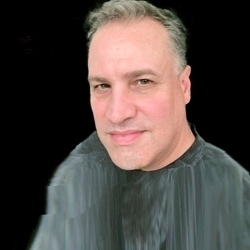Business Week's online Innovation section reported on a new cell phone designed and marketed to the 100+ million baby boomers and seniors in this country. A Cell Phone for Baby Boomers is a great case study and clearly demonstrates what business can do to capture the technophobic segment of our society by completely rethinking a basic item: the cell phone.
Arlene Harris, a mobile phone industry veteran, helped launch a new company dubbed Jitterbug last October. Ms. Harris understood that to meet the needs of older users, she would have to develop both product design and service design into the Jitterbug cell phones. She was able to sell Samsung on her ideas and they manufactured the kinds of phones she knew would appeal to older consumers. The goal: to deliver "a seamless, innovative cross-channel experience."
The Jitterbug mobile phones offer unique features that elderly consumers can really identify with and appreciate:
*
When opened the Jitterbug phones emit a dial tone. How's that for familiarity for older consumers? No dial tone, no cell phone signal strength, so the user can't make a call. Easy to grasp, right?
*
Jitterbug phone earpieces have soft rubber cups that are comfortable and actually cover the user's ear, blocking out ambient noise; a feature elderly or hearing-impaired consumers can get into.
*
The phone's mouthpiece comes down near the user's mouth, not high on the cheekbone, adding another familiar phone feature.
*
Jitterbug phones do not present users with icons or menus; the phones ask a series of basic questions which the users answer by depressing a bold YES or NO button on the handset.
*
Since Jitterbug phones employ Web interface, users have the option to disable any features they don't wish to use permanently. Harris: "We don't want them (the consumers) to see a screen that they don't want. If all the consumer wants is the phone list–no call history, no voicemail–that's all they see."
For two years, Jitterbug and Samsung's industrial designers collaborated before bringing the new phones to market. Samsung understood immediately that there was a potentially large market for this new concept in mobile phones, but they had to be sold on doing more than creating a novel handset: they had to be willing to design the product in tandem with Jitterbug's service system.
Harris: "For them (Samsung) it was a handset. For us, it was a system. The handset was just one element."
Result: The Jitterbug phone design is simplified due to the fact it is managed remotely through a Web-based interface. "It's not just the design of the handset, or what the call centers do, it's all about the entire experience," Harris reiterated.
While cell phones are getting smaller and smaller, and packed with more and more features at the same time, Harris knew that for her demographic: "We need to think this whole thing through, and sort of erase everything that we've done so far. Let's redefine what we should be doing, based on research and based on good old common sense."
This case study is very revealing. Again: are our companies putting R&D capabilities behind what we think consumers will want, or are we willing to go back to the drawing board, back to basics, and yes, to 'good old common sense' to give specific consumers products they will already feel a familiarity and comfort with, simplicity of design and the features they really want and need? Nothing more and nothing less. . .
Did you like this article?
Know someone who would enjoy it too? Share with your friends, free of charge, no sign up required! Simply share this link, and they will get instant access…
Know someone who would enjoy it too? Share with your friends, free of charge, no sign up required! Simply share this link, and they will get instant access…
Content Articles
You may like these other MarketingProfs articles related to Content:
- How Professional Services Marketers Are Approaching GEO
- The State of AI Use Among Professional Writers
- How to Make Content Experimentation an Always-On, Low-Lift Part of Your Workflow
- The Publishers Cited Most by AI Chatbots [Infographic]
- Is AI Effective for Editing Blog Content?
- FOMO Content Marketing: The Good and Bad of Chasing Trends [Infographic]




